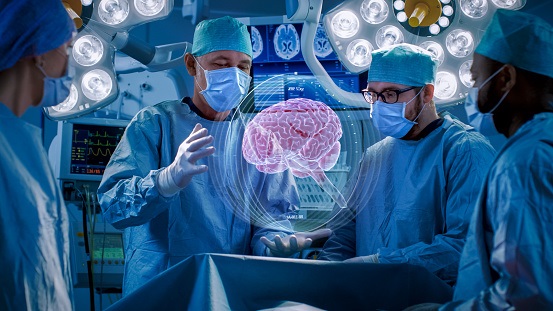
Testing
Myelogram
Overview
A myelogram is a diagnostic test that uses x-ray imaging to examine the spinal canal. In this test, contrast is used to thoroughly evaluate the spinal cord, spinal nerve roots, and spinal canal in detail. The results of this test allows your doctor to further evaluate spinal cord and nerve damage within the spinal canal, including disc herniations, bone spurs, spinal stenosis, tumors, or infections.
Testing
For a myelogram, contrast is injected into the spinal canal through a hollow needle. Prior to inserting the needle, the patient’s back will be cleaned and numbed. Once the needle is inserted into the back, contrast dye will be inserted. Typically, this is not painful and patients may experience a pressure-like sensation. Following the dye injection, x-ray and CT imaging will be taken of the patient’s back.
Risk
Following a myelogram test, the patient will be monitored for 4-8 hours. Some patients may experience side effects of the dye including headache, nausea, and vomiting. Generally, the patient may resume normal activities the next day.
Magnetic Resonance Imaging (MRI)
Overview
A magnetic resonance imaging (MRI) is a noninvasive diagnostic test that is used to visualize soft tissues of the body. These highly detailed images will be used to help diagnose many brain and spinal cord injuries and disease, such as strokes, tumors, or herniated discs.
Testing
A standard MRI machine is a long, narrow tube which requires the patient’s whole body to be inside the tube. This machine may be confined for some patients, however, it does produce the best images. Some facilities do have an open MRI machine which may be a good option for patients with claustrophobia.
The length of the test depends on the specific type of MRI ordered, however, the MRI typically lasts for 15-45 minutes.
Risk
MRI is very safe and unlike CT or x-ray imaging, they do not expose the patient to any radiation. The MRI works by creating a magnetic field, therefore, if any metal is present within or on the patient’s body, it is important to let your doctor or MRI technician know.
Electromyography (EMG) – Nerve Conduction Velocity (NCV)
Overview
EMG and NCS testing measure the electrical activity of the nerves and muscles, usually in an arm or leg. Your doctor may consider these tests if you are suffering from pain, numbness, or unexplained weakness in your arms or legs. These tests can help identify nerve injuries or muscle diseases. EMG and NCV are typically performed in conjugation and will give your doctor insightful information to determine further treatments.
Testing
- EMG and NCV testing is typically performed by a physical medicine or neurology physician.
- During the EMG study, the doctor will place a single wire pine on the skin overlying a particular muscle. You will then be asked to tighten, or contract, the muscle. Electrical activity will be recorded.
- During the NCV study, two major nerve groups will be tested: sensory and motor nerves. The doctor will place a sensor on the skin and a small, mild, electric pulse will be applied to activate the muscle. This test may cause your muscles to twitch. The speed and size of the nerve’s response will be recorded and analyzed by the performing physician.
Risk
There are limited side effects of both EMG and NCV testing. The patient may experience some soreness following the test.

